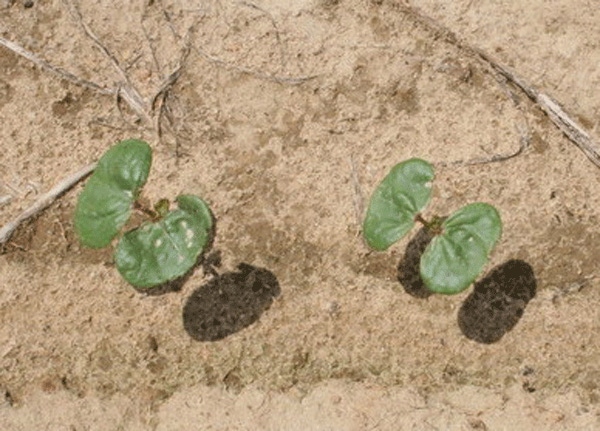May 21, 2012

Depending on location, planting date and moisture level, thrips populations and their threat to cotton was all over the map last week.
Approximately a week ago, George Kennedy’s tobacco thrips weather model suggested that our major thrips generation could be large. However, our recent extended rainfall and cooler weather may have dampened these unwanted expectations, at least until a return to warm sunny weather.
At Rocky Mount May 17, our seedlings averaged approximately four adult and 0.5 immature thrips per plant behind seed treatments at 16 days after planting. Even with the low level of immatures (indicating that the seed treatment is still active), the 4 adult thrips per plant can be damaging, so this finding would call for a foliar spray.
Remember that only two thrips per plant with some indication of immatures calls for a spray.
Seed treatments are known to lose their residual activity against thrips within two to three weeks of planting. As a possible replacement for the typical follow-up foliar spray often put out at the first true leaf stage, a seed treatment along with a chloronicotinoid in-furrow spray (Admire Pro) is being evaluated in Wilson County for the second year.
Although week three after planting often is the acid test of thrips insecticide effectiveness, growth trends are already evident. This approach is also being evaluated at the Rocky Mount and Plymouth stations, as well as very high seed treatment rates, a 2×2 at-planting fertilizer approach to faster early growth, and a planting date study.
In general, our hard-to-control western flower thrips often become a problem on cotton somewhat later than tobacco thrips. In most cases, the levels of “westerns” on cotton are lower when we have good rainfall patterns and are higher when we experience extended hot dry weather.
Because correct thrips species identification requires an expensive high powered microscope, and considerable time and expertise, the first time most producers are aware they may have westerns is when extremely poor thrips control follows a foliar spray for thrips.
For now, a high, expensive rate of Radiant insecticide is essentially the only labeled insecticide that appears to provide good control of westerns.
A number of tests are under way in the Southeast to determine if lower, more affordable rates of Radiant are also effective against ‘westerns’. In most cases with westerns, we keep our fingers crossed that the ‘thrips safe’ five true leaf stage comes along as quickly as possible.
On a brighter note, as we approached May 20 and later, cotton seed treatments planted after this time often do not require a follow-up foliar spray due to the temperature-related shorter ‘window’ of high vulnerability to thrips damage and declining adult migrating thrips levels that often occur toward the end of May to early June. Additionally, remember that as cotton approaches the five true leaf stage a foliar spray is seldom needed — even if immature thrips are present in the bud area.
On another subject, my technician found a kudzu bug on the second cotton seedling sampled in a Wilson County thrips test last Thursday. This might be a good time to let producers and others know that kudzu bugs are not known to damage row crops other than soybeans.
You May Also Like




